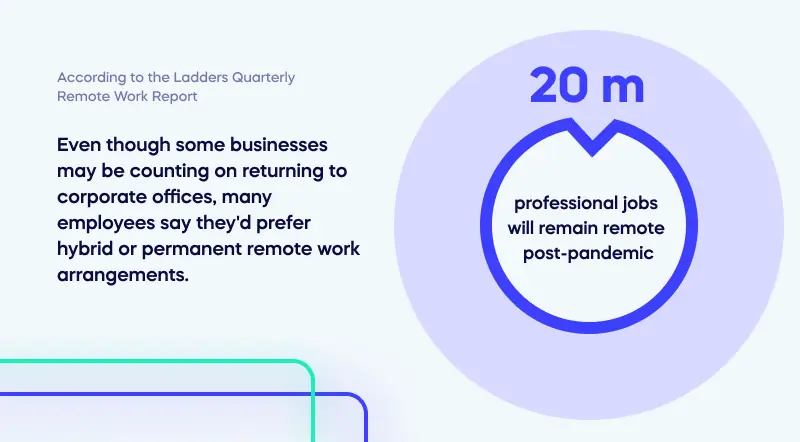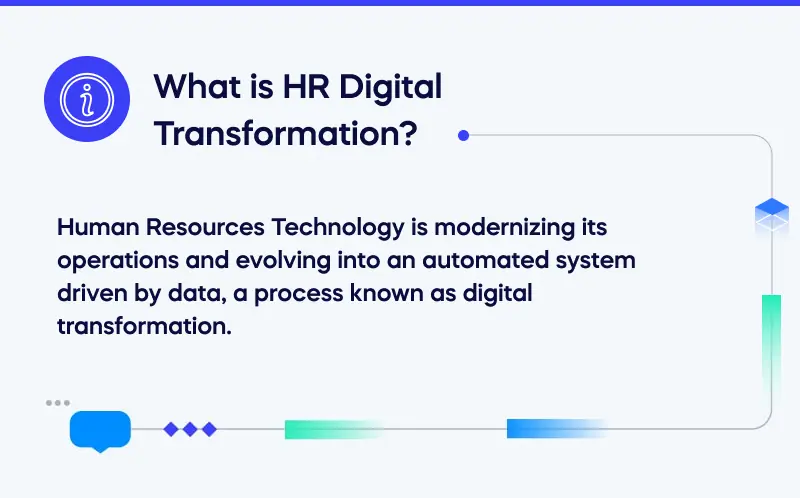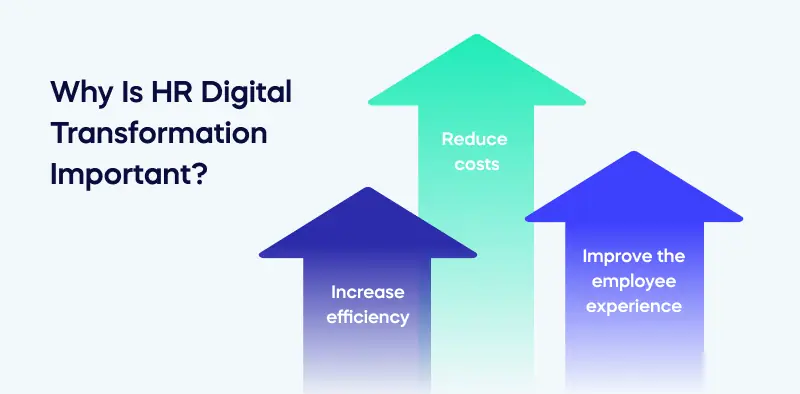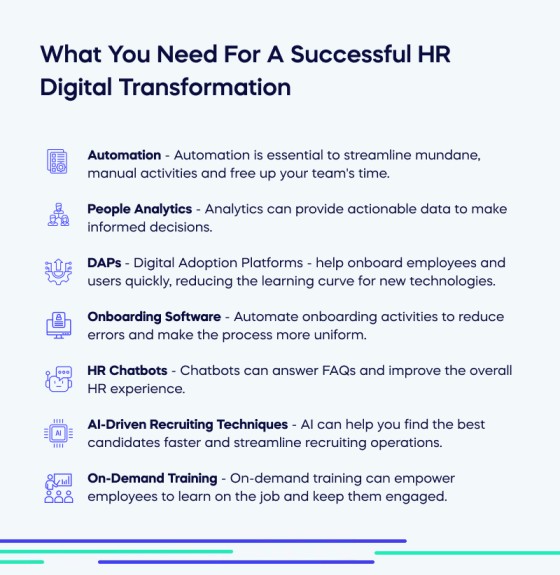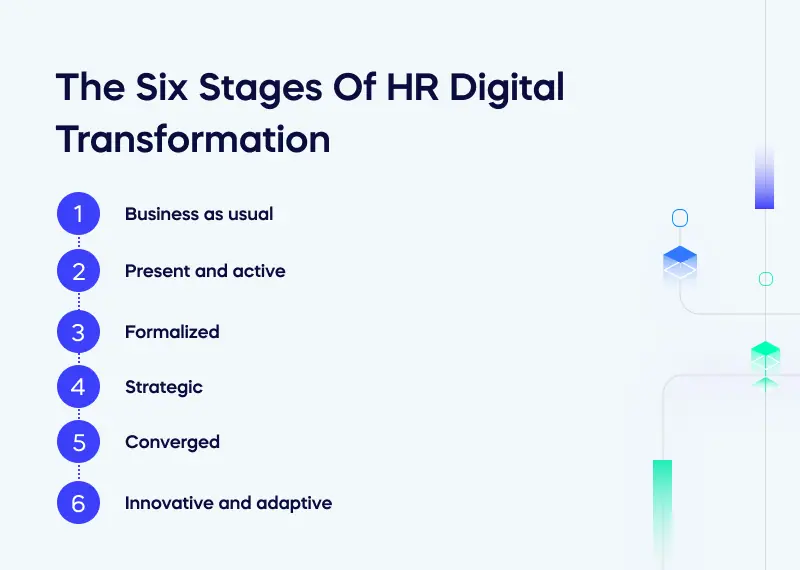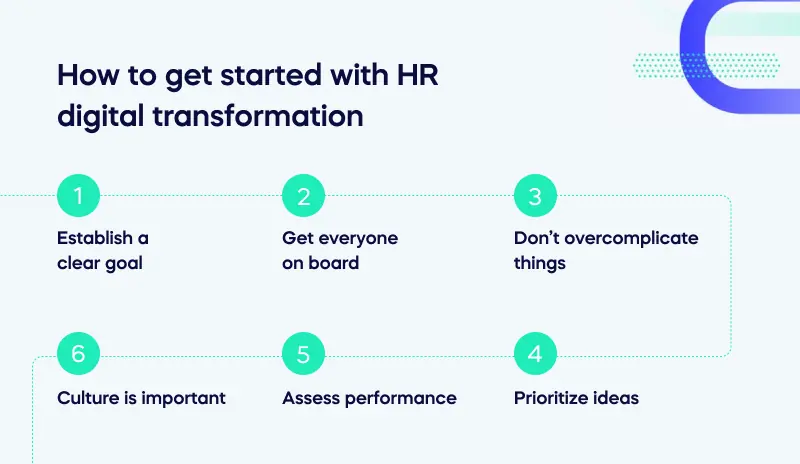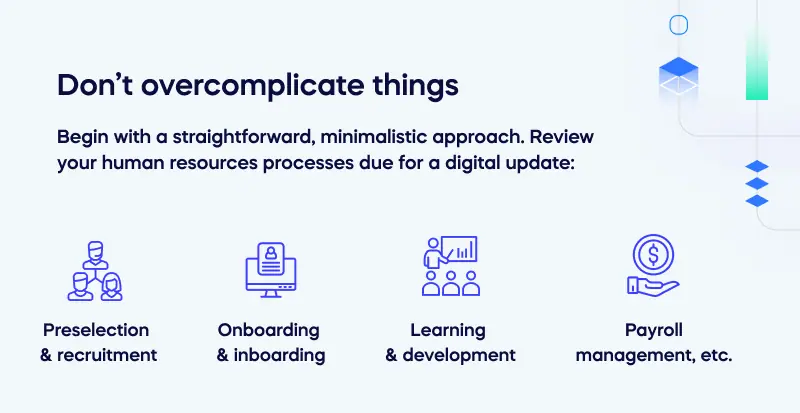HR digital transformation has recently become an increasingly discussed subject among HR professionals. This is justified, as digitalization provides the capacity to revolutionize Human Resources in ways previously unimaginable.
Yet, it is one thing to contemplate this idea and another entirely different matter to start implementing it. To help you begin this challenging journey, we have created a guide to the six stages of HR digital transformation.
Even before the pandemic, work was shifting and accelerating at a quickening pace due to necessity. And now, as we contemplate how to work remotely or from different places, this evolution continues toward uncharted waters.
According to the Ladders Quarterly Remote Work Report, an incredible 20 million professional jobs will remain remote post-pandemic. Even though some businesses may be counting on returning to corporate offices, many employees say they’d prefer hybrid or permanent remote work arrangements.
This article delves deep into the Digital Transformation of Human Resources. It provides an insightful look at what it is, why we need it today more than ever before, and how to enjoy the best results.
What is HR Digital Transformation?
Human Resources Technology is modernizing its operations and evolving into an automated system driven by data, a process known as digital transformation.
Deloitte’s Human Capital Trends Survey made it clear. HR teams now face a dual burden that requires them to act as pioneers in transforming how work is accomplished and the workforce itself.
HR digital transformation isn’t just a shift in focus for the Human Resources department but should be embraced by the entire organization if it succeeds. This means the HR department must lead in facilitating the transition and ensure everyone understands their role in the process.
Why Is HR Digital Transformation Important?
Regardless of the magnitude of an HR transformation, digital or otherwise, success can only be achieved when a clear goal is established. Such changes must make financial sense to ensure long-term viability and growth.
HR digital transformation enables organizations to increase efficiency, reduce costs, and improve the employee experience. Through automation and analytics, HR can make better decisions faster, streamline operations and become a more proactive, strategic partner in business success.
What You Need For A Successful HR Digital Transformation
If you’re looking to upgrade your Human Resources digital strategy, consider these popular Digital Transformation solutions:
- Automation – Automation is essential to streamline mundane, manual activities and free up your team’s time.
- People Analytics – Analytics can provide actionable data to make informed decisions.
- DAPs – Digital Adoption Platforms – help onboard employees and users quickly, reducing the learning curve for new technologies.
- Onboarding Software – Automate onboarding activities to reduce errors and make the process more uniform.
- HR Chatbots – Chatbots can answer FAQs and improve the overall HR experience.
- AI-Driven Recruiting Techniques – AI can help you find the best candidates faster and streamline recruiting operations.
- On-Demand Training – On-demand training can empower employees to learn on the job and keep them engaged.
These are just some solutions available, each of which can provide tangible benefits and help you reach the next level with your digital transformation journey.
The Six Stages Of HR Digital Transformation
Stage 1: Business as usual
Traditional methods still remain the common channels of recording and communication.
Unfortunately, due to a lack of vision from leadership and reluctance towards change, HR departments cannot gain an edge in recruitment strategies or employee retention.
Stage 2: Present and active
Leadership and HR take cognizance of the candidate and employee feedback, while individual HR employees initiate experiments to digitally transform their organizations. HR professionals are also tasked with upskilling their employees to ensure they can effectively leverage the new technologies.
Managing teams is more complex than ever in an increasingly virtual work environment, and HR must prioritize culture, communication, trust building, and career development for their employees.
Stage 3: Formalized
As true metamorphosis begins, the data of candidates and employees are considered when making decisions. Efforts are made to discover any discrepancies in information as company teams work together to apply new technology. The organization’s executive members provide guidance on mastering this new system while every team member contributes their part or expertise.
Stage 4: Strategic
HR teams can conduct studies on employee satisfaction by mapping and sharing employee and candidate data along with feedback across the various departments. Additionally, investments are made in new technologies that support digital transformation within the Human Resources division. Ultimately these advancements enable a more efficient workforce for smoother operations.
Stage 5: Converged
By recruiting innovative HR executives and agencies, we can remake our candidate hiring, onboarding, learning, and goal journeys to feature experiential “micro-moments” that will profoundly enhance satisfaction, performance, and retention.
Stage 6: Innovative and adaptive
Digital transformation is no longer limited to HR but has become a defining factor of the entire organization and its operations. From product development and engineering to marketing, sales, service, and even HR– digital technology is enhancing performance company-wide.
An innovation team keeps track of new technological developments to uncover further improvement opportunities.
After progressing through the six stages of digital transformation, organizational mindsets are entirely altered.
We can consider this the digital mentality, which involves more than just using technology and new platforms; people understand that they must remain aware of the fact that our 21st-century world is ever-evolving, and for a business to stay afloat, it has to be willing to constantly adjust with these changes.
How to get started with HR digital transformation
Although this all sounds promising in principle, getting underway with a HR digital transformation can seem quite intimidating.
To make that initial leap simpler, here are some essentials for success:
Establish a clear goal
Before beginning your HR transformation journey, ensure that you have a specific purpose that benefits the business. Generally speaking, this objective should be centered around solving an employee issue.
As part of the HR transformation process, keeping your employee’s needs in mind is essential. Therefore, before any new technology is implemented within the organization, you should allow employees to test it out for themselves. This will help ensure their satisfaction and successful use of the technology moving forward.
Get everyone on board
A successful digital HR transformation will require enthusiastic participation and involvement from the entire organization – be it employees, leaders in the C-Suite, or anyone part of this process.
Thus, gaining support from all stakeholders is essential for accomplishing a successful outcome.
Don’t overcomplicate things
Begin with a straightforward, minimalistic approach. Review your human resources processes due for a digital update (preselection & recruitment, onboarding & inboarding, learning and development, payroll management, etc.).
Examine what changes should be prioritized by discussing this topic with the members of the C-suite and your employee base.
Prioritize ideas
Prioritize ideas based on impact and effort. It is critical to distinguish the business consequences of digitizing notions from the time and expenses it would take to make them digital.
To kick-start your digital HR journey, begin with high-impact and low-effort ideas. These will help you quickly build the business case for digital HR and get things moving.
Assess performance
Embracing digital technologies is commendable, yet we must reflect on their impact to be successful. We should measure what succeeds and neglect what doesn’t to progress.
The only way to move forward productively is by using technological solutions that effectively address real issues.
Culture is important
Digital technology is only one part of the equation regarding HR and digital transformations within an organization. It’s just as important, if not more so, that everyone has the right mindset. This stems from a strong corporate culture that promotes innovation and inclusion.
Whether it’s the new recruits you bring on board or even the highest levels of your organization, all members need to adopt a digital mindset to ensure a successful transformation.
HR Digital Transformation: The Key to Unlocking Organizational Growth
The HR digital transformation journey is essential for organizations looking to unlock their potential and gain a competitive edge in the 21st century.
Businesses can experience tangible results in employee morale, productivity, and overall organizational growth by taking the necessary steps and ensuring everyone is on board with the plan.
Digital HR transformation is a process that allows organizations to better manage their people and keep up with the ever-evolving job market. With the right approach and attitude, companies can reap the rewards of a successful HR digital transformation.


